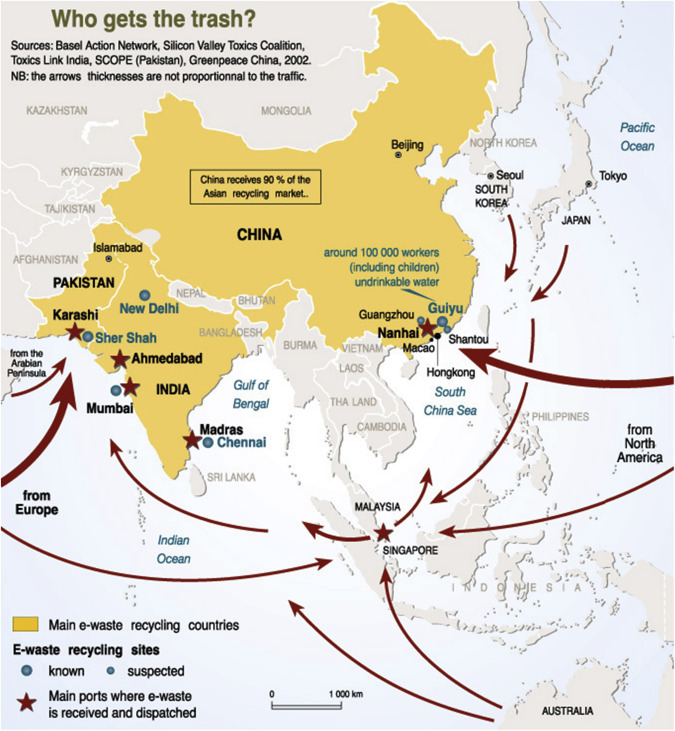Elsevier,
Electronic Waste, Toxicology and Public Health Issues, 2017, Pages 1-15
Chapter on the public health problem of how to effectively deal with or dispose of the ever-increasing number of old or outdated electronic devices (e-waste) in a safe manner. The goal of SDG target 3.9 is to substantially reduce the number of deaths and illnesses from hazardous chemicals and air, water and soil pollution and contamination
Elsevier,
Electronic Waste, Toxicology and Public Health Issues, 2017, Pages 55-61
This chapter will attempt brief review on some of the known factors which define populations, particulary developing countries, at special risk for chemical toxicity from e-waste. The goal of SDG target 3.9 is to substantially reduce the number of deaths and illnesses from hazardous chemicals and air, water and soil pollution and contamination
Elsevier, World Development, Volume 92, 1 April 2017
Although it is one of the poorest countries in the world, devastated by the 1994 Genocide against the Tutsi and heavily aid-dependent, Rwanda has achieved most of its Millennium Development targets for health. This article discusses how it managed this, when many countries in Sub-Saharan Africa failed to achieve theirs, and assesses the sustainability of its solutions.
Elsevier, World Development, Volume 92, 1 April 2017
Using newly-released and globally available high-resolution remote sensing data on forest loss, we update the assessment of the cross-country determinants of deforestation in developing countries. We validate most of the major determinants found in the previous literature, generally based on earlier time-periods, except for the role of institutional quality. Agricultural trade, hitherto relatively neglected, is found to be one of the main factors causing deforestation.
Elsevier, Renewable and Sustainable Energy Reviews, Volume 70, 1 April 2017
Equality between economic progress and environmental sustainability is essential for a developing country like India. In the present time, the economy of India is growing rapidly in a vibrant mode and an efficient way, which in turn demands huge uninterrupted energy supplies. The country's energy needs are met mostly by the usage of fossil fuels and nearly 70% of electricity is generated from coal based power plants. In India, nearly 840 million people depend on traditional biomass to satisfy their energy necessities.
Elsevier, Midwifery, Volume 47, 1 April 2017
Objectives malaria causes complications during 80% of all pregnancies in Uganda. However, only 48% of Ugandan pregnant women took one dose of intermittent preventive therapy while merely 27% took the second dose during 2011. This study investigated midwives’ provision of anti-malaria services in the Buikwe District of Uganda. Design a quantitative exploratory descriptive design was used. Setting prenatal clinics (n=16) in the Buikwe District of Uganda Respondents questionnaires were completed by 40 (out of a population of 45) midwives.
Elsevier, The Lancet Planetary Health, Volume 1, April 2017
Background The availability of freshwater for irrigation in the Indian agricultural sector is expected to decline over the coming decades. This might have implications for food production in India, with subsequent effects on diets and health. We identify realistic and healthy dietary changes that could enhance the resilience of the Indian food system to future decreases in water availability.
Elsevier, The Lancet Planetary Health, Volume 1, April 2017
Background Information about the global structure of agriculture and nutrient production and its diversity is essential to improve present understanding of national food production patterns, agricultural livelihoods, and food chains, and their linkages to land use and their associated ecosystems services. Here we provide a plausible breakdown of global agricultural and nutrient production by farm size, and also study the associations between farm size, agricultural diversity, and nutrient production.
Elsevier, Current Opinion in Green and Sustainable Chemistry, Volume 4, 1 April 2017
Chalcopyrite semiconductors are used in thin film solar cells with the highest efficiencies, in particular for flexible solar cells. Recent progress has been made possible by an alkali postdeposition treatment. Other important trends are the development of tandem cells and of ultrathin solar cells. Recent progress has forwarded the understanding of off-stoichiometry and of bulk defects in these materials.

